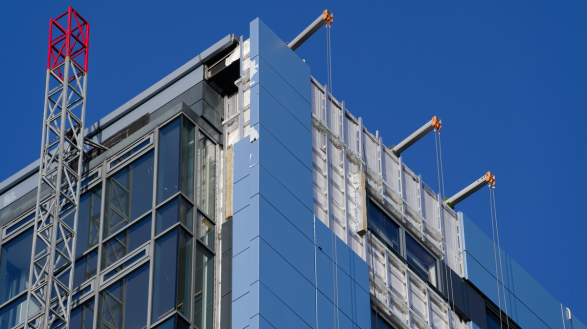Fire safety compliance in high-rise buildings is more than a legal mandate; it’s essential in safeguarding the lives and well-being of residents and occupants, as well as a necessary step in ensuring that the responsibilities of building owners and managers are met. Following the Grenfell tragedy, the importance of stringent and effective fire safety regulations have come into sharp focus, with the Fire Safety (England) Regulations 2022 marking an important step forward in the approach taken towards fire safety measures in high-rise buildings.
In this article, we provide a comprehensive overview of the current standards, equipping building owners and managers with the necessary information to effectively implement these vital regulations.
Compliance Standards Overview
Under article 24 of the regulatory reform, the current Fire Safety Regulations apply to the following buildings in England:
– High-rise residential buildings
– Residential buildings with storeys over 11 metres in height
– All multi-occupied residential buildings with two or more sets of domestic premises
The regulations require that all building owners and managers rigorously undertake regular inspections, conduct drills, as well as provide thorough, up-to-date and transparent information to Fire and Rescue Services:
Enhanced Fire Risk Assessments: Regular, detailed fire risk assessments are required to evaluate factors such as building layout, materials used, and the efficacy of fire safety measures. These assessments are critical for developing effective evacuation strategies.
Up-to-Date Electronic Building Plans: Maintaining accessible, electronic building plans that detail floor layouts, fire safety system locations, and access points, allowing emergency services to quickly understand the building’s structure during an emergency.
External Wall Systems: The provision of detailed information about the high-rise building’s external wall system, including design and materials. If any material changes occur, these must be promptly communicated to the Fire and Rescue Services. Building owners must also report on the risk level associated with the wall system’s design and materials, and any mitigating actions taken to reduce these risks.
Improved Fire Detection and Alarm Systems: High-rise buildings must have advanced fire detection and alarm systems, regularly tested and maintained to ensure their effectiveness.
Compulsory Installation of Sprinklers: The installation of sprinkler systems in all high-rise buildings is mandatory. These systems play a vital role in controlling fires at their inception.
Information Boxes and Signage: Information boxes containing vital building information, including evacuation plans, must be installed. Additionally, clear signage should guide occupants to exits and provide fire safety instructions.
Lifts and Key Fire-Fighting Equipment: Monthly operational checks are required for firefighter lifts, evacuation lifts, and other key firefighting equipment. Any defects, especially in lifts, must be reported to the local FRS as soon as possible if they cannot be fixed within 24 hours. Records of these checks must be kept and made available to all residents and occupants.
Strict Compliance with Building Material Standards: All materials used in high-rise construction must comply with specified fire resistance levels to prevent rapid fire spread.
Increased Responsibility for Building Owners: Owners face heightened accountability for ensuring all fire safety standards are met, including maintaining fire safety systems and keeping detailed records of safety inspections and maintenance.The current standards place a great deal of emphasis on the responsibilities of building owners and managers and by adhering to these standards, building owners and managers not only comply with legal requirements but also demonstrate their commitment to the well-being of their residents and occupants.
To ensure ongoing compliance with the current standards and to maintain the safety of residents and occupants, building owners and managers should:
- Conduct regular fire risk assessments.
- Upgrade fire detection and alarm systems as needed.
- Install sprinkler systems where required.
- Organise regular safety drills and training sessions.
- Ensure the use of compliant building materials.
- Maintain detailed records of all fire safety activities.
As the focus on fire safety continues to intensify, it is vital to remain as proactive as possible in implementing these essential safety measures. Contact us today to discuss maintaining your building’s fire safety to protect lives and premises.
A nationwide
network of intelligent
compliance services.


